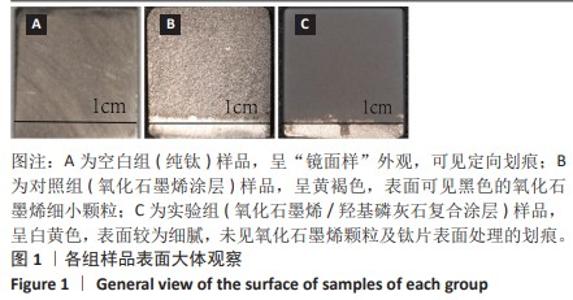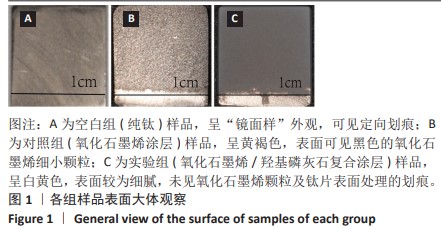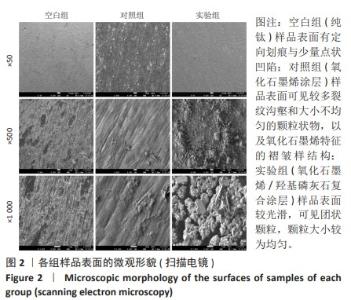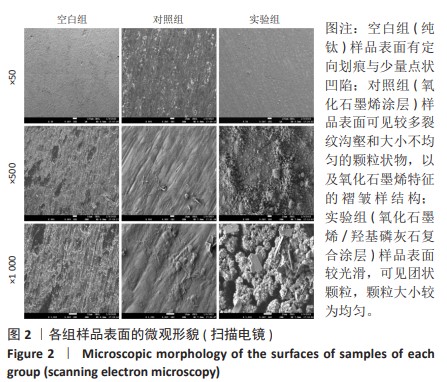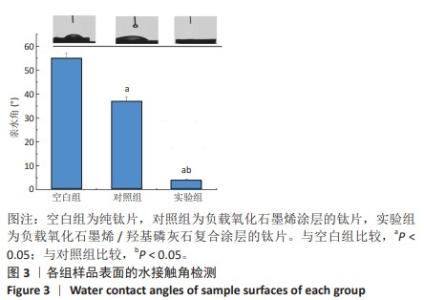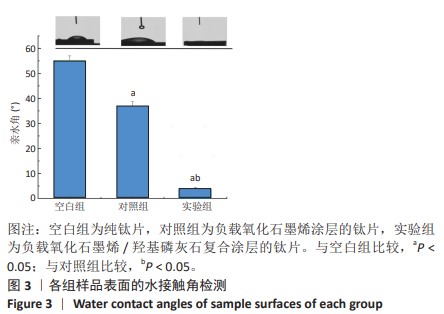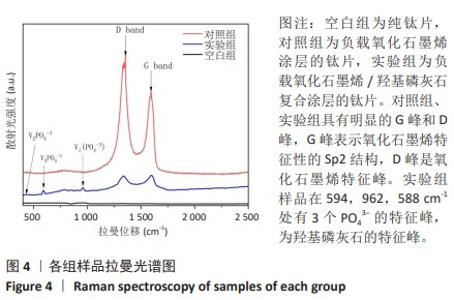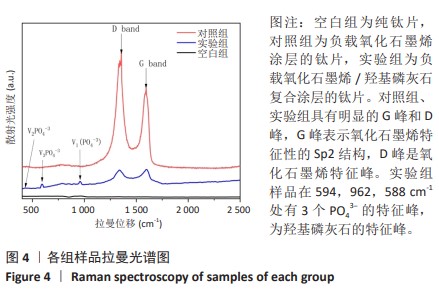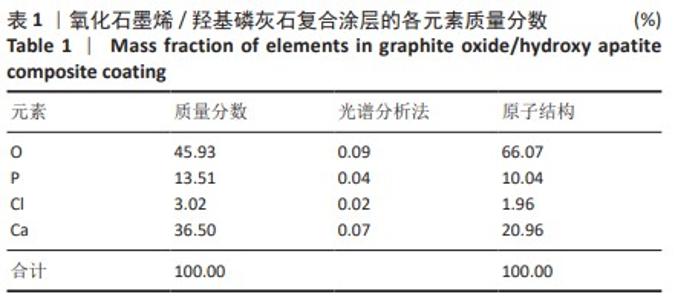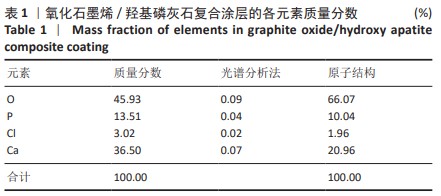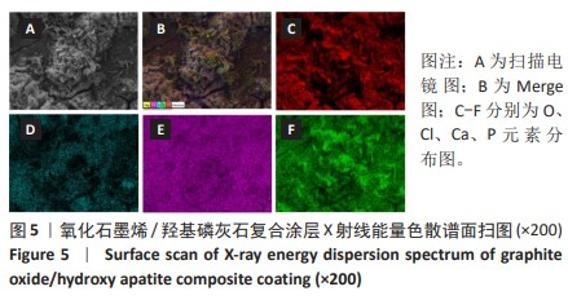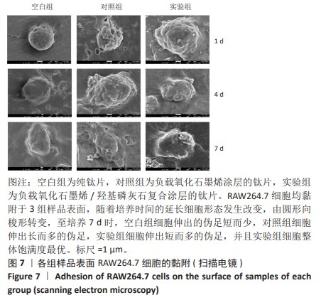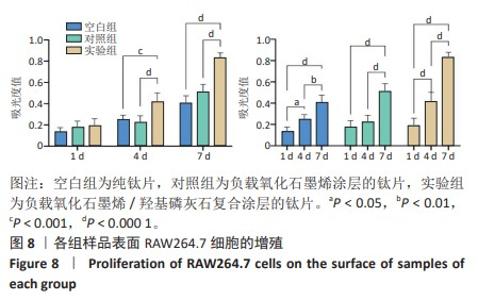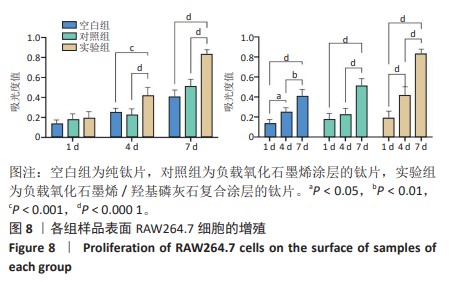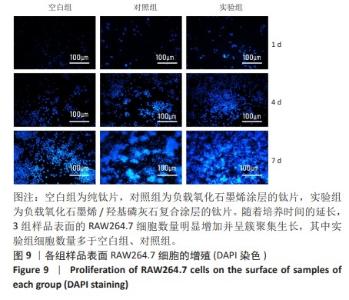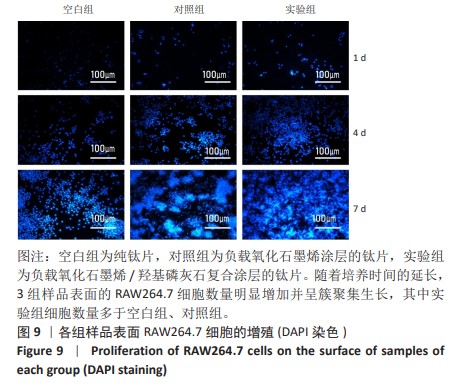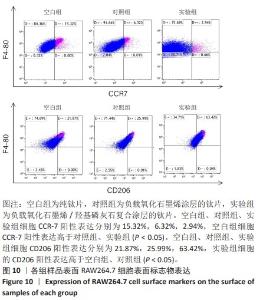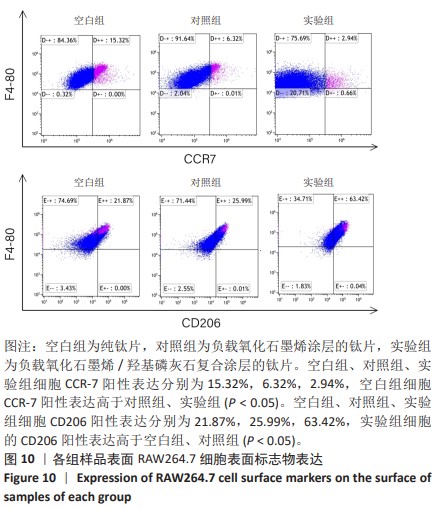[1] 王鸿,吴清霖,赖颖真,等.氧化石墨烯修饰的类骨单位钛表面对巨噬细胞破骨分化影响的研究[J].华西口腔医学杂志,2023,41(2):165-174.
[2] JIANG P, ZHANG Y, HU R, et al. Advanced surface engineering of titanium materials for biomedical applications: From static modification to dynamic responsive regulation. Bioact Mater. 2023;27:15-57.
[3] TRINDADE R, ALBREKTSSON T, GALLI S, et al. Osseointegration and foreign body reaction: Titanium implants activate the immune system and suppress bone resorption during the first 4 weeks after implantation. Clin Implant Dent Relat Res. 2018;20(1):82-91.
[4] SU J, DU Z, XIAO L, et al. Graphene oxide coated Titanium Surfaces with Osteoimmunomodulatory Role to Enhance Osteogenesis. Mater Sci Eng C Mater Biol Appl. 2020;113:110983.
[5] SUN J, LI L, XING F, et al. Graphene oxide-modified silk fibroin/nanohydroxyapatite scaffold loaded with urine-derived stem cells for immunomodulation and bone regeneration. Stem Cell Res Ther. 2021;12(1):591.
[6] FEITO MJ, DIEZ-OREJAS R, CICUENDEZ M, et al. Characterization of M1 and M2 polarization phenotypes in peritoneal macrophages after treatment with graphene oxide nanosheets. Colloids Surf B Biointerfaces. 2019;176:96-105.
[7] HUNG HS, KUNG ML, CHEN FC, et al. Nanogold-Carried Graphene Oxide: Anti-Inflammation and Increased Differentiation Capacity of Mesenchymal Stem Cells. Nanomaterials (Basel). 2021;11(8):2046.
[8] HAN J, KIM YS, LIM MY, et al. Dual Roles of Graphene Oxide To Attenuate Inflammation and Elicit Timely Polarization of Macrophage Phenotypes for Cardiac Repair. ACS Nano. 2018;12(2):1959-1977.
[9] LI K, SHEN Q, XIE Y, et al. Incorporation of Cerium Oxide into Hydroxyapatite Coating Protects Bone Marrow Stromal Cells Against H(2)O(2)-Induced Inhibition of Osteogenic Differentiation. Biol Trace Elem Res. 2018;182(1): 91-104.
[10] BARADARAN S, MOGHADDAM E, BASIRUN WJ, et al. Mechanical properties and biomedical applications of a nanotube hydroxyapatite-reduced graphene oxide composite. Carbon. 2014;69:32-45.
[11] 于婉琦,周延民,赵静辉.口腔种植体新材料的研究现状[J].国际口腔医学杂志,2019,46(4):488-496.
[12] LIANG H, BU Y, ZHANG J, et al. Graphene oxide film as solid lubricant. ACS Appl Mater Interfaces. 2013;5(13):6369-6375.
[13] CHAE SY, PARK R, HONG SW. Surface-mediated high antioxidant and anti-inflammatory effects of astaxanthin-loaded ultrathin graphene oxide film that inhibits the overproduction of intracellular reactive oxygen species. Biomater Res. 2022;26(1):30.
[14] SATTARI S, ADELI M, BEYRANVAND S, et al. Functionalized Graphene Platforms for Anticancer Drug Delivery. Int J Nanomedicine. 2021;16:5955-5980.
[15] TOPUZ M, DIKICI B, GAVGALI M. Titanium-based composite scaffolds reinforced with hydroxyapatite-zirconia: Production, mechanical and in-vitro characterization. J Mech Behav Biomed Mater. 2021;118:104480.
[16] 龙智生,熊龙,龚飞鹏,等.多尺度羟基磷灰石/壳聚糖微管结构人工骨对兔骨缺损修复及成血管的影响[J].中国组织工程研究,2022,26(34): 5436-5441.
[17] 杨帮成,周学东,于海洋,等.钛种植体表面改性方法[J].华西口腔医学杂志,2019,37(2):124-129.
[18] LI J, ZHAO C, XU Y, et al. Remodeling of the osteoimmune microenvironment after biomaterials implantation in murine tibia: Single-cell transcriptome analysis. Bioact Mater. 2023;22:404-422.
[19] MUKHERJEE SP, GUPTA G, KLODITZ K, et al. Next-Generation Sequencing Reveals Differential Responses to Acute versus Long-Term Exposures to Graphene Oxide in Human Lung Cells. Small. 2020;16(21):e1907686.
[20] LI Q, SHEN A, WANG Z. Enhanced osteogenic differentiation of BMSCs and M2-phenotype polarization of macrophages on a titanium surface modified with graphene oxide for potential implant applications. RSC Adv. 2020;10(28):16537-16550.
[21] KANG MS, JEONG SJ, LEE SH, et al. Reduced graphene oxide coating enhances osteogenic differentiation of human mesenchymal stem cells on Ti surfaces. Biomater Res. 2021;25(1):4.
[22] STEVANOVIC M, DJOSIC M, JANKOVIC A, et al. Antibacterial graphene-based hydroxyapatite/chitosan coating with gentamicin for potential applications in bone tissue engineering. J Biomed Mater Res A. 2020;108(11):2175-2189.
[23] LU M, CHEN H, YUAN B, et al. Electrochemical Deposition of Nanostructured Hydroxyapatite Coating on Titanium with Enhanced Early Stage Osteogenic Activity and Osseointegration. Int J Nanomedicine. 2020;15:6605-6618.
[24] LIAO Y, WANG W, LI Z, et al. Comparative proteomic analysis reveals cytotoxicity induced by graphene oxide exposure in A549 cells. J Appl Toxicol. 2021;41(7):1103-1114.
[25] KARIMI N, KHARAZIHA M, RAEISSI K. Electrophoretic deposition of chitosan reinforced graphene oxide-hydroxyapatite on the anodized titanium to improve biological and electrochemical characteristics. Mater Sci Eng C Mater Biol Appl. 2019;98:140-152.
[26] 孙文昕,樊丽君,郑钟印,等.医用金属表面含锶涂层耐蚀性和生物相容性研究进展[J].材料工程,2021,49(12):72-82.
[27] 吕尚毅,何惠宇,吾凡别克·巴合提,等.氧化石墨烯-羟基磷灰石复合涂层材料的理化性质及生物相容性[J].中国组织工程研究,2024,28(10): 1477-1483.
[28] 吾凡别克·巴合提.羟基磷灰石-氧化石墨烯纳米涂层促进成骨分化及调节巨噬细胞极化的研究[D]. 乌鲁木齐:新疆医科大学,2023.
[29] 何懋典.还原氧化石墨烯修饰壳聚糖/纳米羟基磷灰石复合支架的性能研究[D].广州:南方医科大学,2023.
[30] ERIKSSON C, NYGREN H, OHLSON K. Implantation of hydrophilic and hydrophobic titanium discs in rat tibia: cellular reactions on the surfaces during the first 3 weeks in bone. Biomaterials. 2004;25(19):4759-4766.
[31] WANG X, MEI L, JIANG X, et al. Hydroxyapatite-Coated Titanium by Micro-Arc Oxidation and Steam-Hydrothermal Treatment Promotes Osseointegration. Front Bioeng Biotechnol. 2021;9:625877.
[32] SUNARSO, TOITA R, TSURU K, et al. A superhydrophilic titanium implant functionalized by ozone gas modulates bone marrow cell and macrophage responses. J Mater Sci Mater Med. 2016;27(8):127.
[33] HOTCHKISS KM, REDDY GB, HYZY SL, et al. Titanium surface characteristics, including topography and wettability, alter macrophage activation. Acta Biomater. 2016;31:425-434.
[34] NOGUEIRA RP, DEUZIMAR UJ, HILARIO F, et al. Characterization of Optimized TiO2 Nanotubes Morphology for Medical Implants: Biological Activity and Corrosion Resistance. Int J Nanomedicine. 2021;16:667-682.
[35] LORENZETTI M, GONGADZE E, KULKARNI M, et al. Electrokinetic Properties of TiO2 Nanotubular Surfaces. Nanoscale Res Lett. 2016;11(1):378.
[36] KYRIAKIDES TR, KIM HJ, ZHENG C, et al. Foreign body response to synthetic polymer biomaterials and the role of adaptive immunity. Biomed Mater. 2022;17(2):10.1088/1748-605X/ac5574.
[37] CICUENDEZ M, CASARRUBIOS L, BARROCA N, et al. Benefits in the Macrophage Response Due to Graphene Oxide Reduction by Thermal Treatment. Int J Mol Sci. 2021;22(13):6701.
[38] HUANG M, XIAO M, DONG J, et al. Synergistic anti-inflammatory effects of graphene oxide quantum dots and trans-10-hydroxy-2-decenoic acid on LPS-stimulated RAW 264.7 macrophage cells. Biomater Adv. 2022; 136:212774.
[39] NEGRESCU AM, MITRAN V, DRAGHICESCU W, et al. TiO2 Nanotubes Functionalized with Icariin for an Attenuated In Vitro Immune Response and Improved In Vivo Osseointegration. J Funct Biomater. 2022;13(2):43.
[40] 何妲.人羊膜上皮细胞干预脂多糖诱导RAW264.7细胞向M1极化及其机制初步研究[D].长沙:中南大学,2014.
[41] 刘梦园,巴亚玛,张程程,等.载银二氧化钛纳米管涂层种植体体内生物相容性研究[J].牙体牙髓牙周病学杂志,2013,23(5):303-309.
[42] 陈江,陈旭晞,周麟.骨免疫调节机制对种植体骨结合及骨生物材料引导骨再生的影响[J].口腔疾病防治,2018,26(10):613-620.
|
